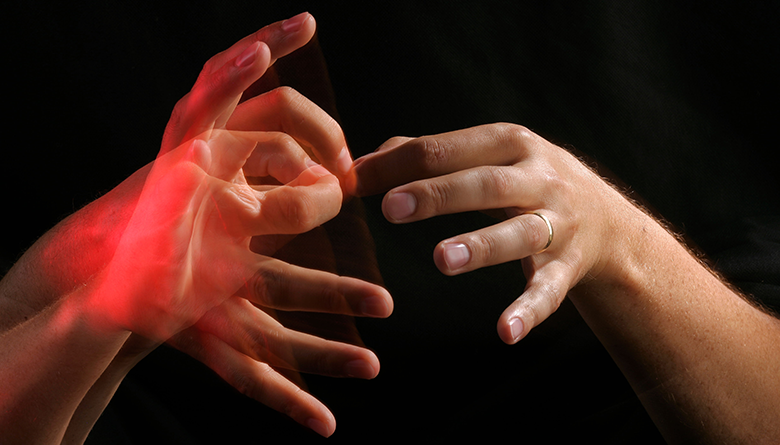By Christopher Morrison, Ph.D. ’17
Sign language is more than a method of communication, it is a way of life for nearly 2 million Americans. The deaf community has a rich cultural identity and there are countless reasons why someone who can hear would want to learn sign language. In fact, American Sign Language (ASL) recently became the third most popular non-English language in U.S. college classrooms (beating out German in 2013). Unlike spoken languages, which require the sophistication of pronunciation, ASL’s hand movements and facial expressions are intuitive and accessible for beginners.
However, learning ASL is challenging. It is challenging because it is difficult to practice and review what you have learned without having a fluent signer giving you constant feedback. Most of the tools available for learning ASL, such as textbooks and video dictionaries, fall short.
In 2015, I took an ASL course at Hudson Valley Community College. The class met for three hours once a week. It was a silent classroom, which challenged students to communicate using only the signs they learned in class.
The difficulty I had with the class was remembering the material learned each week. ASL requires correct hand shapes, movements, and facial expressions. It is very easy to mix up signs and convey an incorrect meaning. For example, the sign for “work” and “arrest” are similar but have very different meanings. Each week, I spent the first half of class trying to remember the signs from the week prior even though I had studied both the textbook and my notes.
For many, it is difficult to find the money and time to take an ASL class. Friends and family want to interact with their loved one, but are so consumed by everyday life and their jobs, that they give up. This often happens with parents of deaf and hard of hearing children. I founded Sign Language Blitz, a resource designed to help individuals learn ASL, because I saw a need and a simple way I could help using my expertise in software.
Sign Language Blitz is a video-based flashcard platform that can be used by learners to practice and review ASL while at home or on the go. Our goal is to introduce the user to phrases rather than strictly focus on vocabulary. Our videos are 100 percent focused on the expression of an idea in the form of a phrase. This helps those learning ASL to become more conversational and comfortable when signing. While most platforms tend to focus on words, many ideas can get lost in translation if translated word-for-word, the same way they would if a sentence was translated word-for-word by Google Translate. Focusing on phrases is also important because ASL has its own complex ideas that can be expressed with facial expression and hand movements that cannot be succinctly expressed in English.
I’d like to thank my team of deaf and hearing teachers and advisers. They have been in the background, but they deserve as much credit as me.
- To see a demo of Sign Language Blitz, visit https://sign-language-blitz.com/demo/.
- To like us on Facebook, visit https://www.facebook.com/SignLanguageBlitz/
- A beta is being launched on Feb. 7th
About the Author
Christopher Morrison, Ph.D., is an astro nuclear engineer at USNC-Space in Seattle and the founder of Sign Language Blitz. He received his Ph.D. in nuclear engineering at Rensselaer Polytechnic Institute in 2017 and his B.S. in aerospace engineering and computer science at Embry Riddle Aeronautical University. Chris is a Department of Energy NEUP Fellow and a member of the Explorer’s club.


